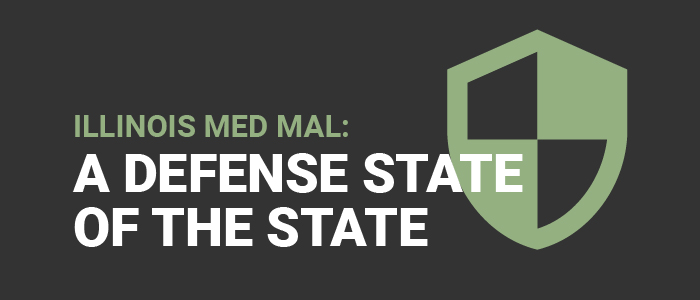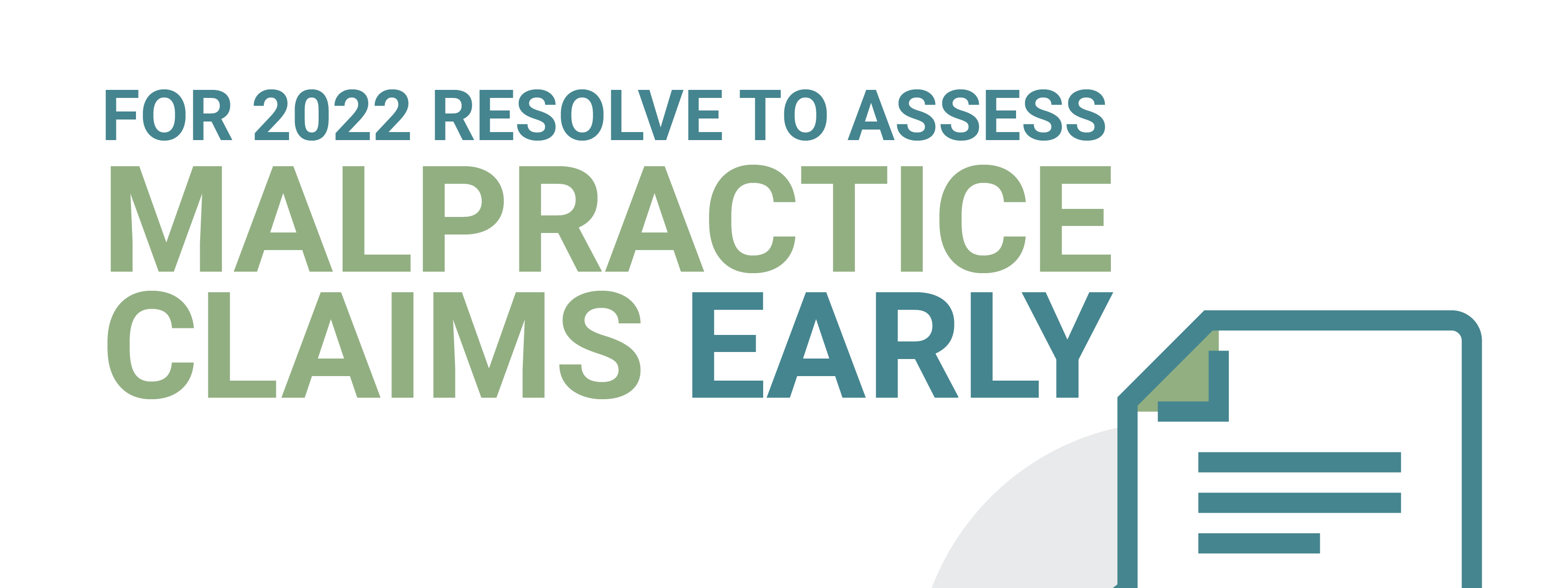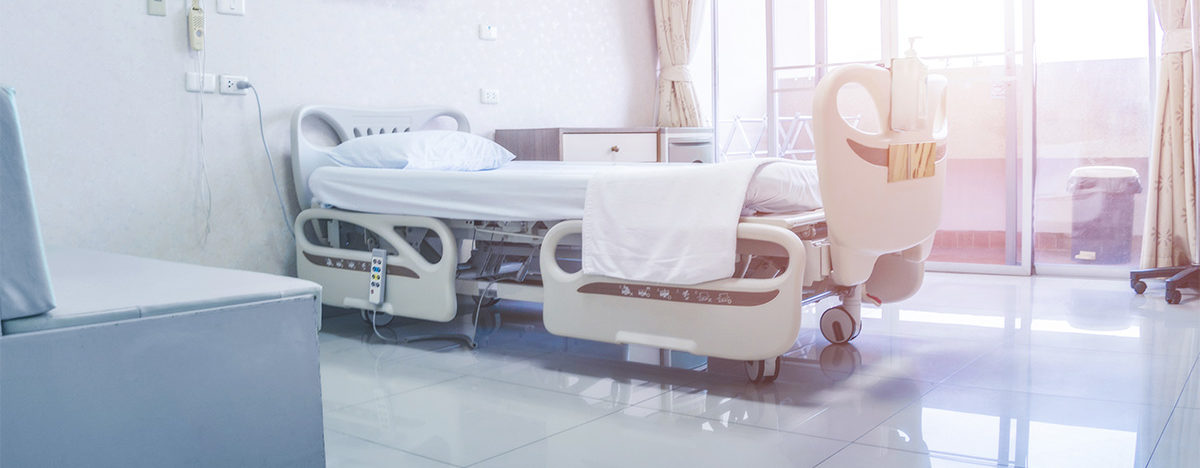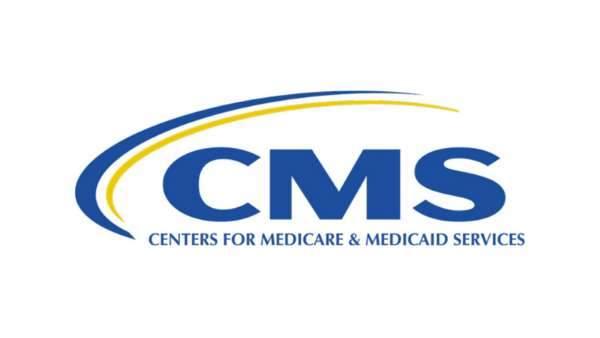Archive for the ‘MedMal’ Category
Illinois Med Mal: A Defense State of the State
Tuesday, February 22nd, 2022
It’s no secret that Illinois is a plaintiff-friendly state. While true in several types of litigation, it is especially true for medical malpractice plaintiffs.
One indicator of the volume of malpractice litigation in the state can be found in Medscape’s 2021 Malpractice Report. The online health information giant surveyed 4,300 physicians nationwide between May and August 2021, asking if they’d been sued for malpractice in the prior year.
The report ranked Illinois fourth in the country for the prevalence of its doctors which reported being sued for malpractice. The top spot went to its next-door neighbor, Indiana, which was followed by New York and Pennsylvania.
Medscape noted that the prevalence of medical malpractice litigation in a state is tied to the extent of tort reforms, the number of doctors in the state, patient demographics, and legislatures’ efforts to cut down on frivolous litigation.
Illinois’ legislature and governor have been panned by groups that support tort reform, which would make it more difficult for injured parties to sue doctors and health systems, among other parties.
In December, the American Tort Reform Foundation, ranked Cook, Madison and St. Clair Counties in fifth place on its 2021-2022 Judicial Hellholes list, a jump from 8th place the prior year.
The group, which advocates for tort reform nationwide, places jurisdictions on the Judicial Hellholes list which it says are known for allowing innovative lawsuits, welcoming litigation tourism and expanding civil liability.
While the counties were largely listed for asbestos litigation and Illinois Biometric Information Privacy Act lawsuits, the group took swings at the Illinois General Assembly, which it deemed “one of the most plaintiff-friendly legislatures in the country” and Gov. J.B. Pritzker, whom the group asserted “supports a liability-expanding agenda to the detriment of Illinois citizens and small businesses.”
The group also marked the 20th anniversary of the Judicial Hellholes report by compiling an Everlasting Judicial Hellholes list of repeat offenders, including Illinois on the list.
In its rationale, it said that a jurisdiction from the state has been on each report since its inception and added that the Illinois plaintiffs’ bar is one of the most powerful in the country in terms of political influence, giving millions of dollars to lawmakers and office seekers.
One recent example of plaintiff-friendly legislation went into effect last summer after Gov. J.B. Pritzker signed into law a bill allowing plaintiffs to collect six percent prejudgment interest on judgments they receive for their personal injury and wrongful death lawsuits.
The law, Senate Bill 72, took effect July 1, 2021. Previously, Illinois law only allowed plaintiffs to receive nine percent interest post-judgment.
Proponents of the law, including the Illinois Trial Lawyers Association, said the law would incentivize earlier resolution of cases through settlement.
In a column for the Chicago Daily Law Bulletin, ILTA President J. Matthew Dudley explained that under the new law, defendants are provided a set off on prejudgment interest if they make a plaintiff a written settlement offer within the first 12 months that the case is pending. If the plaintiff rejects the offer, the set off will only accrue on the difference between the highest written offer and the case’s final judgment.
For the defense bar in Illinois, it will be key for health care clients to come to the negotiating table early. Early claims investigation is vital to that effort, including assessing the standard of care, causation and damages.
Our team at Med Law Advisory Partners has the necessary expertise to conduct thorough medical record reviews. Our consulting nurse experts draw on their skills and experience to research the standard of care and identify any deviations from it in the care a patient received.
If deviations exist, the legal nurse consultant determines whether they are relevant to the facts of the case and offers defense counsel an informed opinion on it.
Once the legal nurse consultant has weighed in on the standard of care, he or she, along with the team, investigates whether the elements of negligence have been met. Consulting nurse experts can be instrumental in proving or disproving whether any breach caused the injury claimed and the extent of any damages.
Specifically, he or she can determine the proximate cause, the result that directly produced an event that would not have otherwise occurred. In medical cases, the event is usually a physical injury or harm. The legal nurse consultant identifies the factors that directly contributed to the injury or harm from the record and other evidence.
Early claims assessment can dramatically impact the expenses in a medical negligence/malpractice case. With the new prejudgment interest law in place in Illinois, it only benefits defendants to get your ducks in a row early.
Contact us today to learn more about how we can help in your medical malpractice matter.
Illinois Medical Malpractice: A Plaintiff’s State of the State
Tuesday, February 22nd, 2022
It’s no secret that Illinois is a plaintiff-friendly state. While true in several types of litigation, it is especially true for medical malpractice plaintiffs.
One indicator of the volume of malpractice litigation in the state can be found in Medscape’s 2021 Malpractice Report. The online health information giant surveyed 4,300 physicians nationwide between May and August 2021, asking if they’d been sued for malpractice in the prior year.
The report ranked Illinois fourth in the country for the prevalence of its doctors which reported being sued for malpractice. The top spot went to its next-door neighbor, Indiana, which was followed by New York and Pennsylvania.
Medscape noted that the prevalence of medical malpractice litigation in a state is tied to the extent of tort reforms, the number of doctors in the state, patient demographics, and legislatures’ efforts to cut down on frivolous litigation.
Illinois’ legislature and governor have been panned by groups that support tort reform, which would make it more difficult for injured parties to sue doctors and health systems, among other parties.
In December, the American Tort Reform Foundation, ranked Cook, Madison and St. Clair Counties in fifth place on its 2021-2022 Judicial Hellholes list, a jump from 8th place the prior year.
The group, which advocates for tort reform nationwide, places jurisdictions on the Judicial Hellholes list which it says are known for allowing innovative lawsuits, welcoming litigation tourism and expanding civil liability.
While the counties were largely listed for asbestos litigation and Illinois Biometric Information Privacy Act lawsuits, the group took swings at the Illinois General Assembly, which it deemed “one of the most plaintiff-friendly legislatures in the country” and Gov. J.B. Pritzker, whom the group asserted “supports a liability-expanding agenda to the detriment of Illinois citizens and small businesses.”
The group also marked the 20th anniversary of the Judicial Hellholes report by compiling an Everlasting Judicial Hellholes list of repeat offenders, including Illinois on the list.
In its rationale, it said that a jurisdiction from the state has been on each report since its inception and added that the Illinois plaintiffs’ bar is one of the most powerful in the country in terms of political influence, giving millions of dollars to lawmakers and office seekers.
One recent example of plaintiff-friendly legislation went into effect last summer after Gov. Pritzker signed into law a bill allowing plaintiffs to collect six percent prejudgment interest on judgments they receive for their personal injury and wrongful death lawsuits.
The law, Senate Bill 72, took effect July 1, 2021. Previously, Illinois law only allowed plaintiffs to receive nine percent interest post-judgment, meaning the interest accrued following the date their judgment was entered.
Proponents of the law, including the Illinois Trial Lawyers Association, said the law would incentivize earlier resolution of cases.
In a column for the Chicago Daily Law Bulletin, ILTA President J. Matthew Dudley explained that under the new law, defendants are provided a set off on prejudgment interest if they make a plaintiff a written settlement offer within the first 12 months that the case is pending. If the plaintiff rejects the offer, the set off will only accrue on the difference between the highest written offer and the case’s final judgment.
Med Law Advisory Partners works with Illinois plaintiffs on their medical malpractice matters. One way we can assist plaintiffs is through helping them verify that their claims have merit.
Under Illinois law, plaintiffs are required to submit an affidavit with their complaint declaring that the affiant (typically, their attorney) has consulted with a healthcare professional whom they reasonably believe:
- Is knowledgeable about the relevant issues involved in the particular action;
- Who currently or in the last six years has practiced or taught in the same area of health care or medicine that is at issue in the particular action; and
- is qualified by experience or demonstrated competence in the subject of the case.
There are several advantages to engaging Med Law Advisory Partners early in your litigation.
First, because our consulting nurse experts offer their knowledge and talents at a cost-effective rate substantially lower than a testifying expert rate, engaging Med Law can help minimize unnecessary expenses at the beginning of the case, which is particularly important when a case is found to have little or no merit.
Our consulting nurse experts have decades of clinical experience in a wide variety of specialties and established practice in managing the nuances of medical-legal claims.
They’re able to partner with the legal team early to quickly assess the strengths and weaknesses of a claim and inform litigation strategy — a skill not found in many testifying experts. Consulting nurse experts use data-driven processes, standard of care evaluation, and clinical judgment to identify the issues that truly matter and help the legal team determine the best path to claim resolution.
If, and when needed, our team also can help plaintiffs work with a testifying expert who supports the established theories of liability.
Additionally, we can help plaintiffs’ counsel pinpoint important issues in a case quickly, including assessing the extent of the plaintiff’s injuries, their level of recovery, and their overall damages. The result is a savings in time and expense for the client.
Contact us for more information on how we help Illinois plaintiffs in their medical malpractice matters.
Set Your Medical Malpractice Defense Up For Success Through Early Evaluation
Tuesday, January 11th, 2022
Ringing in the new year brings opportunities to reflect upon the past year and make resolutions to better ourselves in the new one.
In 2022, healthcare systems facing medical malpractice claims should consider adding a new resolution to their list: committing to investing in early-stage claim assessments so that they may be resolved quickly and in a cost-effective manner.
For each medical malpractice claim they face, it is crucial early on in a case to assess the standard of care, causation, and damages.
It’s not uncommon for defendants and their counsel to experience regret at the conclusion of the case for not more thoroughly evaluating these three measures at the outset. Each is important for equipping counsel with the information needed to make decisions about the case.
For example, no defendant wants to settle claims for more than they’re worth, to try a case that should never have reached a courtroom or settle when a case should be tried. For each of these scenarios, early investigation is key.
At Med Law Advisory Partners, our team has the expertise needed to conduct thorough medical record reviews. Our consulting nurse experts use their skills to research the standard of care and identify any deviations from it in the delivery of patient care.
If deviations exist, the legal nurse consultant determines whether those deviations are relevant to the facts of the case and offers counsel an informed opinion on it.
Once the legal nurse consultant has weighed in on the standard of care, he or she, along with the team, investigates whether the elements of negligence have been met. Consulting nurse experts can be instrumental in proving or disproving whether any breach caused the injury claimed and the extent of any damages.
Specifically, he or she can determine the proximate cause, the result that directly produced an event that would not have otherwise occurred. In medical cases, the event is usually a physical injury or harm. The legal nurse consultant identifies the factors that directly contributed to the injury or harm from the record and other evidence.
Early valuation of a claim can dramatically impact the expenses in a medical negligence/malpractice case. Legal nurse consultants play a key role in assessing the extent of any damages and helping value the claim, which in turn can help determine whether the parties want to settle early or proceed to trial. Early settlement often saves money for all parties involved.
In addition to claims assessments, our team may also be engaged to develop strategy on possible outcomes of a claim and provide executive consulting to the healthcare team to help minimize risk for future similar claims.
Contact us today to learn more about how early engagement can work to your benefit in your medical malpractice matter.
How to manage more pressure injury claims in-house
Monday, November 8th, 2021
Med Law Advisory works with our healthcare partners to manage more pressure injury claims in-house. Our early assessments help quickly value the claim and proactively identify areas to improve the delivery of care upstream, reducing incidents of pressure injuries within the health system, improving patient outcomes, and providing savings on both litigation and health care costs.
Pressure injuries acquired in healthcare settings are among the most common types of preventable injury, yet they remain a persistent and costly problem for providers.
This month, officials and healthcare workers worldwide are observing the 2021 World Wide Pressure Injury Day on Nov. 18. The day’s purpose is to spotlight pressure injury prevention and educate the public about pressure injuries.
According to the Agency for Healthcare Research and Quality, more than 2.5 million people in the U.S. develop pressure injuries each year. Of that, approximately 60,000 deaths a year are directly attributed to pressure injuries. The AHRQ estimates the cost of these injuries between $9.1 to $11.6 billion each year.
Pressure injuries are also a major source of litigation. According to the AHRQ, more than 17,000 lawsuits are related to pressure injuries annually. It’s the second-most common claim after wrongful death, and pressure injury claims are more numerous than falls or emotional distress claims. Additionally, settlement amounts for pressure injuries are on the rise in many markets.
Arguably, hospitals are the most frequently targeted object of healthcare litigation. As the public’s utilization of healthcare increased exponentially during the pandemic, the issue of pressure injuries has become even more acute in this setting.
Med Law Advisory works with our healthcare partners to manage more medical malpractice claims involving pressure injuries in-house. Our unique partnership helps identify areas to improve the delivery of care upstream, reducing incidents of pressure injuries within the health system, providing savings on both litigation and health care costs.
On the claim support side, our consulting nurse experts provide early assessments of pressure injury matters, enabling our health system clients to quickly value and aggressively manage claims based on merit. Our team brings unique medical-legal expertise that is highly cost-effective and cost-saving in an era where quality of care and financial stewardship are critical priorities.
In instances where it is necessary to engage outside counsel in a pressure injury claim, the legal team can hit the ground running with the early work completed by Med Law, including indexed medical records and reports, an initial opinion of liability, and areas of strategic focus.
Med Law also provides executive consulting services to healthcare organizations. Through partnering with Med Law to manage litigation, healthcare systems can leverage the work already being completed by our consulting nurse experts to proactively identify and respond to areas of concern and integrate insights with their quality and patient safety agenda.
Med Law has the expertise to capture vital information derived from extensive data collection, discern trends, identify system defects, and advise strategic options. Additionally, our staff can partner with yours to provide staff education on litigation insights to improve patient care and defensive documentation techniques to help mitigate litigation risk.
Contact us for more information on how we can help you respond to pressure injury-based medical malpractice claims and partner with your organization to reduce incidents of pressure injuries.
Does your suit have merit? Using “consulting” experts to certify med mal claims
Wednesday, September 8th, 2021
Engaging the Med Law team early can help plaintiffs’ counsel pinpoint important issues in a case quickly, including assessing the extent of the plaintiff’s injuries, their level of recovery, and their overall damages.
In more than half of the United States, before plaintiffs can bring a medical malpractice lawsuit, they are first required to obtain certification from a medical professional that their claims have merit.
The name of the filing varies from state to state: Some states call it a certificate of merit, while others call it an affidavit of merit, or an offer of proof. This procedural step is an outgrowth of tort reform efforts, in which state legislatures across the country have sought to limit what they deem as frivolous lawsuits.
According to the National Conference of State Legislatures, currently 28 states require the filing of a certificate of merit or its equivalent before a medical malpractice claim can proceed.
Generally, a certificate of merit must contain an opinion from a qualified medical professional stating that the professional has reviewed the plaintiff’s medical records and that, in their opinion, the defendants were more likely than not negligent in treating the plaintiff.
Who qualifies as a healthcare provider also varies from jurisdiction to jurisdiction, but in several states, nurses may complete certificates of merit. In such jurisdictions, plaintiffs’ counsel can rely on Med Law Advisory Partners’ consulting nurse experts to review and provide their opinions on the merits of a case.
The advantages to engaging Med Law’s team at the outset of your medical malpractice litigation are numerous.
First, because our consulting nurse experts offer their knowledge and talents at a cost-effective rate substantially lower than a testifying expert rate, engaging Med Law can help minimize unnecessary expenses at the beginning of the case, which is particularly important when a case is found to have little or no merit.
Our consulting nurse experts have decades of clinical experience in a wide variety of specialties and established practice in managing the nuances of medical-legal claims.
They’re able to partner with the legal team early on to quickly assess the strengths and weaknesses of a claim and inform litigation strategy – a skill not found in many testifying experts. Consulting nurse experts use data-driven processes, standard of care evaluation, and clinical judgment to identify the issues that truly matter and help the legal team determine the best path to claim resolution.
If and when needed, they also facilitate work with a testifying expert who supports the established theories of liability.
Engaging the Med Law team early can help plaintiffs’ counsel pinpoint important issues in a case quickly, including assessing the extent of the plaintiff’s injuries, their level of recovery, and their overall damages. The result is a savings in time and expense for the client.
While plaintiffs may view certificates of merit as an obstacle to litigation, completing the process with a consulting nurse expert is a strategic, cost-effective way to provide more clarity at an early stage about the value of the case and whether they have a likelihood of success.
Contact us for more information on how we can partner with you to assess your cases for merit and support you through the litigation process.
How to Save Millions on a CMS Immediate Jeopardy Enforcement
Tuesday, March 9th, 2021
Senior living providers face unrelenting challenges—a burdensome regulatory environment, financial sustainability, COVID-19 preparedness, quality and safety performance, complex legal issues, and a workforce that is more stressed and vulnerable than ever before. Read on to learn how a deep dive into the medical records may have saved this LTC facility millions in CMS fines.
CMS Compliance
The Centers for Medicare and Medicaid Services (CMS) has indicated that now more than ever, they are taking necessary steps to ensure long-term care facilities are adequately meeting the needs of their residents through ongoing, focused site surveys. The stated purpose of a CMS survey of a skilled nursing facility (SNF) is to ensure that the SNF is in substantial compliance with Medicare’s Requirements of Participation. This is to presumably increase the likelihood of improved resident outcomes and quality of life. Substantial compliance is assessed when there are no conditions present that could cause more than minimal harm or actual harm to any resident.
CMS Immediate Jeopardy
When non-compliance exists, CMS has the authority to impose one or several enforcement remedies. These may include a Civil Money Penalty (CMP); denial of payment for new admissions, a targeted plan of correction, and/or termination from Medicare and Medicaid programs. According to CMS Memo #17-37-NH on CMPs, the remedies are “intended to promote a swift return to substantial compliance for a sustained period of time, preventing future non-compliance.”
When CMS deems a CMP is appropriate, they make a determination between a Per Day and Per Instance assessment. Per Day CMP is used to address non-compliance when a resident suffers actual serious harm at the immediate jeopardy (IJ) level, a resident was abused, or the facility had persistent deficient practices violating federal regulations. CMP assessments are not only impacted by the type of non-compliance. Factors such as the date the facility was determined to be out of compliance also affect assessments. Immediate jeopardy assessments often involve CMPs above 1 million dollars. When assessed, they significantly impact the already limited resources a long-term care facility needs to deliver quality resident care.
It goes without saying that long-term care facilities should be held accountable for providing substandard care to their residents. It is arguable, though, that the CMS survey process itself needs improvement. In our experience, however, many times, issues arise when the medical record documentation falls short and fails to substantiate the comprehensive and compassionate care rendered by the nursing home staff. In these instances, facilities are not only at risk for substantial sanctions from CMS but significant liability claims as well.
Med Law Case Study
We present a case in which our client, a mid-sized regional skilled nursing facility, faced an Immediate Jeopardy assessment by CMS related to wound care provided to one of their long-term residents over a ten-month period. Defense counsel for the SNF reached out to Med Law when the survey team was onsite, requesting an emergency medical record review to help defend the assessment and mitigate damages. Working alongside the Director of Informatics and VP of Clinical Operations for the facility, the Med Law team had remote access to the facility’s electronic medical record (EMR) within 2 hours. Over the next few days, Med Law nurse consultants diligently reviewed clinical documentation surrounding the resident’s 13 wounds, working with nursing administration to fill in the noteworthy documentation gaps.
Within days of initiating the review, Med Law consultants determined:
- The facility properly and thoroughly assessed and reassessed the resident’s risk of skin breakdown with rare exceptions.
- A comprehensive, person-centered care plan to address the resident’s risk for skin breakdown and actual pressure injuries was developed. Care plan updates and revisions were ongoing.
- Supportive interventions to promote healing of the resident’s existing wounds and prevent new wounds were noted throughout the record.
- Wound consultant notes, found outside the EMR, provided supportive evidence the resident’s physicians were closely monitoring his wounds and directing wound care.
Review Results
As a result of the collaborative efforts between the Med Law consultants and facility nursing administration, the teams identified significant documentation that supported proper care and treatment of the resident’s wounds for most of the original period of non-compliance. Unfortunately, issues remained regarding a lack of documentation to substantiate provider notification of symptoms consistent with wound infection for six days. The resident’s physician became aware of the wound changes during a follow-up wound evaluation. These findings were submitted to the CMS survey team for consideration in the Immediate Jeopardy assessment. The final calculation of CMPs was pending at the time of this post; however, given the duration of the initial period of non-compliance, the review findings likely saved the facility hundreds, if not millions of dollars in penalties.
Strong record-keeping equals a strong defense in regulatory and medical-legal matters. Accurate and clear documentation in the medical record supports the staff’s attempts to provide comprehensive, person-centered care to patients and residents. Given the intense regulatory oversight and volatile nature of litigation in the senior-care environment, it’s more important than ever that staff understand the importance of memorializing resident assessments and the overall care rendered in the medical records.
How Med Law Advisory Partners Can Help
Med Law Advisory Partners can help LTC organizations implement action plans to help mitigate risk for and effectively respond to regulatory assessments and liability claims. Our LTC Defense Preparedness Program identifies weaknesses in record-keeping systems and outlines ways to improve processes and defend standard of care claims.
If you would like more information on how our team can help your organization, we’d love to hear from you. Contact us to schedule a conversation.
 Founded by Alicia Davis, RN, LNCC, Med Law Advisory Partners (and former ALN Consulting) provides resources and expertise in the areas of safe opioid prescribing, medical malpractice, and post-acute care litigation, including COVID-19 claims. Alicia and her team have worked with government entities, healthcare systems, insurers, and senior-living operators for nearly 20 years, helping mitigate risk and manage medical-legal and healthcare fraud claims.
Founded by Alicia Davis, RN, LNCC, Med Law Advisory Partners (and former ALN Consulting) provides resources and expertise in the areas of safe opioid prescribing, medical malpractice, and post-acute care litigation, including COVID-19 claims. Alicia and her team have worked with government entities, healthcare systems, insurers, and senior-living operators for nearly 20 years, helping mitigate risk and manage medical-legal and healthcare fraud claims.
Originally published March 8, 2021.
Falsifying Medical Records and Identifying Missing or Misleading Information
Saturday, February 27th, 2021
Falsifying medical records is no easy feat. Proving that it has occurred can be just as challenging. Patient medical records are legal documents with federal and state laws governing their management. Any appearance of medical record tampering or inappropriate altering can lead to investigations and can impact legal proceedings relying on records as evidence. …read more
Universal Precautions vs. Standard Precautions
Thursday, February 18th, 2021
Most healthcare lawsuits involve a deviation from an established standard of care. To some extent, all medical centers and care facilities have policies in place to prevent the spread of infection. But are their guidelines up to date in light of recent public health issues? Is a provider’s infection control program making all reasonable efforts to guard against pandemics or contagious diseases that are either rare or unheard of? Are processes streamlined to ensure safety when a health professional is cut with “sharps” or splashed with body fluid?
In examining a case, legal teams search for evidence that a facility has – or has not – followed the most current health guidelines to protect staff, patients, and the community at large from infectious disease. Two similar terms pop up in legal research: Universal Precautions and Standard Precautions.
To understand both these terms, attorneys and paralegals must first consider the two main types of pathogen transmission: bloodborne and airborne.
Universal Precautions
In 1983, Centers for Disease Control (CDC) published the Guideline for Isolation Precautions in Hospitals. One section, “Blood and Body Fluid Precautions,” encouraged in-hospital healthcare workers to adhere to these precautions when a patient was known or suspected to be infected with a bloodborne pathogen like HIV or Hepatitis B.
The CDC followed up with Recommendations for Prevention of HIV Transmission in Health-Care Settings in August 1987. These 1987 recommendations encouraged the use of blood and body fluid precautions for all patients regardless of their infection status.
The extension of precautions to all patients was referred to as Universal Precautions. Under these guidelines, blood and body fluids of all patients were considered potentially infectious. Universal Precautions specified the use of gloves and face shields and avoiding exposure with needles and other instruments after use when the potential for contact with blood and bodily fluids was anticipated. The importance of frequent handwashing was at the core of these recommendations.
By 1987, a set of rules known as Body Substance Isolation (BSI) was added. It expanded the concept of personal protective equipment to include plastic aprons and covers for hair and shoes to keep all moist body substances off hair, skin, clothes, and mucous membranes. BSI went beyond simply discarding needles in puncture-resistant containers to placing them in puncture-proof containers. Hands were to be thoroughly washed before as well as after patient care and wearing gloves. Body Substance Isolation utilized hospital gowns, medical gloves, shoe covers, safety goggles, and surgical masks or N95 respirators. However, there was not a consistent interpretation or use in either BSI or universal precautions.
Standard Precautions
Times have changed since Universal Precautions were first set in place. The 21st century has seen devastating illness from Ebola virus, avian flu, West Nile virus, SARS, Zika virus and biological warfare as well as the pandemic flu from previous generations. Gloves alone do not completely protect a health professional or patient. Even diseases usually transmitted by contact can be aerosolized by saliva and respiratory secretions. Irrigating a wound can risk a splash back of fluid. Respirator masks can be contaminated. Today, public health officials must prepare against contact and airborne transmission as well as bloodborne risks.
In 1996, the Centers for Disease Control and Prevention established the term Standard Precautions. This broadened the focus on prevention, applying the principles to all patients regardless of diagnosis or presumed infection status. These guidelines consider the risk of transmission of illness from both recognized and unrecognized sources.
In the very simplest terms, Standard Precautions involve washing hands before and after patient contact, whether or not gloves are worn. They involve wearing clean gloves when touching blood, body fluids, and contaminated items, as well as a clean, non-sterile gown and a mask, eye protection or face shield in the likely event of splashes or sprays. Soiled equipment and linen are carefully handled to prevent injuries from used equipment.
These measures are the minimum infection prevention practice applying to all patient care, regardless of the healthcare setting or whether a patient is known or suspected to carry disease.
Transmission-Based Precautions
Transmission-Based Precautions are the second tier of basic infection control and are to be used in addition to Standard Precautions for patients who may be infected or colonized with certain infections, including the virus that causes COVID-19, for which additional precautions are needed to prevent infection transmission. Those include Contact Precautions, Droplet Precautions, and Airborne Precautions. Each have specific guidelines and applications which must be addressed in policy and followed by staff to avoid legal ramifications.
Universal Precautions vs. Standard Precautions
In summary, universal precautions involve precautions taken with all patients, regardless of suspicion of infection, to prevent the spread of bloodborne pathogens. In an inevitable evolution, standard precautions, in contrast, are steps taken to encompass fighting the spread of airborne pathogens in situations where providers come into contact with any form of body fluid. Transmission-Based precautions are more specific and used in addition to standard precautions when certain infections are present. The type of precaution applied in a facility is essential to most medical malpractice and healthcare-related claims. Understanding the difference is key both for healthcare providers and legal teams.
The presence or absence of a “safety culture” (also known as a safety climate) promoting appropriate infection precautions is a key component in any medical malpractice case. Med Law’s team of nurse consultants can help pinpoint whether a provider has been in compliance and can be a strong partner in pursuing or defending a medical malpractice suit. We’d love to chat with you – contact us today to schedule a conversation.
Med Law Advisory Partner’s team of medical-legal consultants can help you pinpoint whether a provider has been in compliance and be your best foot forward in pursuing or defending a medical malpractice suit. We’d love to chat with you – contact us today to schedule a conversation.
 Founded by Alicia Davis, RN, LNCC, Med Law Advisory Partners (formerly ALN Consulting) provides resources and expertise in the areas of health care litigation and health systems improvement. Med Law Advisory Partners’ team has had the privilege of working with national and regional healthcare systems, legal firms, insurers, and senior-living operators for nearly 20 years, providing medical-legal case investigation.
Founded by Alicia Davis, RN, LNCC, Med Law Advisory Partners (formerly ALN Consulting) provides resources and expertise in the areas of health care litigation and health systems improvement. Med Law Advisory Partners’ team has had the privilege of working with national and regional healthcare systems, legal firms, insurers, and senior-living operators for nearly 20 years, providing medical-legal case investigation.
Originally published July 29, 2016. Post last reviewed and updated Feb. 18, 2021.
Medical Malpractice and Long-Term Care: Plaintiffs
Monday, July 24th, 2017
This is the second installment of our two-part series looking at medical malpractice cases in long-term care, from the perspectives of both the defense and the plaintiff. Click here to read Medical Malpractice and Long Term Care: Defense.
Each season brings a new chapter in the legal battle over caps on medical malpractice claims. Recently, the Florida Supreme Court ruled that capping damages on pain and suffering in these cases is unconstitutional. The new ruling overturns a controversial law that the state legislature and governor affected back in 2003. Even more recently, a Wisconsin appellate court declared its own state’s malpractice claim cap unconstitutional. This means that the State of Wisconsin will no longer limit noneconomic damages in medical malpractice cases to $750,000.
But where some limits on plaintiff damages are struck down, other roadblocks materialize. The State of Kentucky now requires a panel of medical providers to evaluate claims filed against healthcare providers, including long-term care facilities. Patients and their families who want to seek legal damages from a care facility must now go before a panel before they can go to court. The evaluator’s opinions are eligible to be used as evidence in subsequent litigation. This and other legislation could not only reduce monetary compensation but also delay plaintiffs’ access to the circuit court for months.
On the federal level, a bill passed in the U.S. House of Representatives, the Protecting Access to Care Act of 2017 (H.R. 1215), would limit both damages and attorney fees as well as modify statutes of limitations in medical malpractice claims. Non-economic damages in medical malpractice lawsuits would be limited to $250,000. Moreover, juries would not be made aware of this cap on damages. If enacted, H.R. 1215 would apply to litigation where healthcare coverage was provided or subsidized by the federal government, including through subsidies or tax benefits.
Arbitration Agreements
New legislation could have a tremendous impact on anyone whose loved one has received improper care or suffered an adverse medical event in a nursing home, assisted living center, or in other long-term care. Last fall, the Final Rule put forth by the Center for Medicare and Medicaid Services (CMS) stated that LTC facilities could not require clients to sign pre-dispute arbitration agreements, which aim to prevent residents and their families from suing over care issues. At this time, CMS is reconsidering this rule after the American Health Care Association challenged the rule in federal court and was granted a preliminary injunction in district court. CMS has published a new rule, the revisions of which include the removal of the prohibition on LTC facilities requiring residents sign an arbitration agreement as a condition of admission to a facility.
An Uncertain Future
Recent caps on medical malpractice damages suggests that claimants seeking relief from a long-term care provider may find the odds against them. It is unclear how long legislative battles may drag on, or what other U.S. states may follow suit with medical malpractice bills. This makes it all the more challenging – and all the more important – for plaintiff attorneys to fight vigorously for their clients’ interests.
To prevail against a long-term healthcare provider, the plaintiff must first establish that the LTC facility has breached the industry standard of care. The defense will counter with any evidence that the facility was in compliance with the standards of care or, in the case of any breach in the care standard, that they were not responsible for the adverse outcome that prompted the lawsuit.
An Expert to Challenge Their Experts
The plaintiff will counter by challenging the defense team’s expert testimony. As with other litigation, medical malpractice and long-term care cases often pit one expert against the other. This means calling the most relevant expert witnesses available to support the case. Nursing expertise is ideal in cases of LTC-related medical malpractice.
The next challenge is to justify the amount of damages the claimant is seeking. This means meticulously documenting not only the physical changes now, but problems he or she will likely have in the future. The less obvious the effects on a patient’s health, mobility and life, the greater the burden on the plaintiff’s legal team to prove that the damages sought are reasonable. Quantifying the pain and suffering of a living facility resident is not easy, to say nothing of a deceased patient who cannot testify on his or her behalf.
The Best Investment for Your Time
Attorneys lack the time – and paralegals and jurors lack the acumen – to painstakingly review and evaluate lengthy medical records. This calls for a skilled medical-legal professional to bridge the gap. Legal nurse consultants distill the facts to their essence while providing constructed evaluations, analyses, and case histories. They provide precise, comprehensive information that attorneys can use and jurors can understand.
While medical malpractice caps and other changes affecting long-term care patients are evolving, a legal nurse consultant can be the best weapon in your arsenal. Contact us to learn more how you can put the ALN Consulting team to work for you.
Sources
“Wisconsin’s cap on medical malpractice awards unconstitutional, courts rules,” Milwaukee Journal-Sentinel, July 5, 2017
http://www.jsonline.com/story/news/investigations/2017/07/05/wisconsins-cap-medical-malpractice-awards-unconstitutional-courts-rules/451418001/
“Malpractice damage caps struck down by Florida Supreme Court,” Orlando Sentinel, June 8, 2017.
http://www.orlandosentinel.com/news/politics/political-pulse/os-malpractice-damages-20170608-story.html
“Lawsuit challenges new law aimed at limiting medical malpractice lawsuits,” Lexington Herald-Leader, July 6, 2017
http://www.kentucky.com/news/politics-government/article159985419.html
“Florida justices eye constitutionality of malpractice caps,” Palm Beach Post, June 9, 2016
http://www.palmbeachpost.com/news/state–regional-govt–politics/florida-justices-eye-constitutionality-malpractice-caps/TomuNdKwsg6wTE2mjPK5gN/
“House passes medical malpractice bill,” Washington Examiner, June 28, 2017
http://www.washingtonexaminer.com/house-passes-medical-malpractice-bill/article/2627374
“CMS lifts ban on nursing home arbitration agreement,” Modern Healthcare, June 5, 2017
http://www.modernhealthcare.com/article/20170605/NEWS/170609949/cms-lifts-ban-on-nursing-home-arbitration-agreement
Medical Malpractice and Long Term Care: Defense
Wednesday, June 21st, 2017
We’re kicking off a two-part series looking at medical malpractice cases in long-term care, from the perspectives of both the defense and the plaintiff.
Part 1: The Defense of Long-Term Care Facilities
When a defense team defends a long-term care facility against medical malpractice, one of the first questions to ask is: “Did this facility and its medical professionals adhere to an established standard of care?” New requirements in the Final Rule put forth by the Center for Medicare and Medicaid Services (CMS) complicate this question more than ever.
Last fall, long-term care (LTC) facilities faced the first major overhaul of federal participation requirements since 1991. The Final Rule produced new specifications on features of a facility’s building and staffing ratios. Long-term care centers must now develop compliance and ethics programs as well as Quality Assurance and Performance Improvement (QAPI) initiatives. For a nursing home or assisted living center, this now means assessing the full spectrum of patient care from staff members’ skill sets and training to the right environment, equipment, health information technology, and other resources.
The Final Rule also stated Medicare and Medicaid certified long-term care facilities must not enter into an agreement for binding arbitration with a resident or their representative until after a dispute arose between parties. An industry group challenged CMS’s legal authority and won a preliminary injunction in federal court, and the Trump administration ultimately dropped the matter and chose not to appeal to the U.S. Supreme Court, essentially ending the ban on pre-dispute arbitration agreement use in long-term care.
As standards change, liability remains the same.
The next phase of Final Rule regulations takes effect this November, with the final changes to come in 2018. All of this new regulated compliance may mean more – and different – ways that care providers can trip up and land in legal hot water.
But in any case, law firms will continue to represent nursing homes and assisted living facilities in legal disputes over care, including medical malpractice allegations. Even with federal efforts to put a cap on medical malpractice awards, these cases can wreak havoc on care providers and their insurers even in the best of circumstances.
With such high stakes, LTC facilities must be more than CMS-compliant. They must be prepared to defend themselves in the face of medical malpractice litigation with the best expert witnesses for their case, as well as establish medical facts in a way that jurors with no medical background can comprehend. These are both tasks which legal nurse consultants (LNC’s) are in a unique position to fulfill.
An expert who recommends other experts.
A legal nurse consultant will cull all medical, employment, invoices, and deposition testimony. He or she will identify missing pieces, such as absent records, for the defense attorney to request. At that point, the LNC can recommend the most suitable medical professionals to explain and defend against the plaintiff’s allegations.
The importance of making facts understandable to lay jurors should not be underestimated. In a medical malpractice case overturned last month by the Missouri Supreme Court, the initial judge threw out the patient’s informed consent agreement because it “could only confuse the jury in its determination of the facts.”
In most malpractice cases, medical jargon is too intricate for lay jurors to fully grasp. The LNC behind the scenes, and experts on the witness stand whom he or she identifies, will walk the jury through the details to understand why a lawsuit was filed, and why the defendant is not liable.
Causation is key
Once a legal team has fully addressed the “standard of care” question, it must address what caused the adverse outcome. Should a deviation from the care standard be found, did it result in the issue for which the plaintiff seeks damages?
In yet another recent case, an Ohio appeals court ruled in favor of a skilled nursing facility in a medical malpractice case, vacating the $1 million in damages and attorney fees from the original trial two years ago. A deceased resident’s estate administrator attributed her death to staff negligence, as well as pressure wounds and “fatal” injuries that were not reported to her family or doctor.
The LTC center filed a motion for a new trial, as well as a reduction in damages, which was denied the following year. But the defense appealed – and the appellate court ruled in their favor, citing insufficient evidence that they intentionally acted, or failed to act, knowing that substantial harm would likely result. Further, the judge found no evidence of ill-will or a spirit of revenge when caring for the woman.
This is the type of long-term care malpractice case where a legal nurse consultant can make a real difference in the outcome. In a case like this, the LNC would review the resident’s medication history and progress notes of physicians and nurses. Establishing causation takes more than checking vital signs and scanning a medical record. It is important not only to research a facility resident’s prescribed diet (which is now a requirement in CMS compliance), but whether or not the resident has adhered to that regimen and eaten the food the long-term care facility has provided. This puts the defendant in the best possible position to challenge financially devastating litigation.
As with the two cases in Missouri and Ohio, a serious allegation – and even losing one legal battle – does not mean that a defense team can’t eventually prevail. Your best weapon can be a legal consultant with a nursing background – and a full command of the details and nuances of a seemingly straightforward medical event. With a strong knowledge of regulatory changes in the long-term care landscape, a legal nurse consultant can help a legal team build a strong defense for the client.
Sign up for our email updates so you don’t miss the second part in our series on Malpractice in Long-Term Care outlining how a legal nurse consultant can improve a the Plaintiff’s case in long-term care litigation. ALN Consulting will continue to stay on top of these and other developments. Contact ALN Consulting if you have questions about a case and would like an initial consultation.
Sources
Final Rule, Federal Register, October 4, 2016. https://www.gpo.gov/fdsys/pkg/FR-2016-10-04/pdf/2016-23503.pdf
“Medicare Backtracks on Long Term Care Arbitration Rule,” Bloomberg BNA, June 6, 2017. https://www.bna.com/medicare-backtracks-longterm-b73014451967/
“Federal Efforts to Cap Medical Malpractice Awards Stall,” June 8, 2017. The Legal Examiner. http://virginiabeach.legalexaminer.com/medical-malpractice/federal-efforts-to-cap-medical-malpractice-awards-stall/
“Missouri Supreme Court Gives New Life to Medical Malpractice Case,” Legal Newsline, May 31, 2017. http://legalnewsline.com/stories/511120653-mo-supreme-court-gives-new-life-to-medical-malpractice-case
“Court Grants Nursing Home a Win in Appeal of $1 Million Medical Negligence Suit,” McKnight’s Long Term Care News, May 1, 2017. http://www.mcknights.com/news/court-grants-nursing-home-a-win-in-appeal-of-1-million-medical-negligence-suit/article/653732/